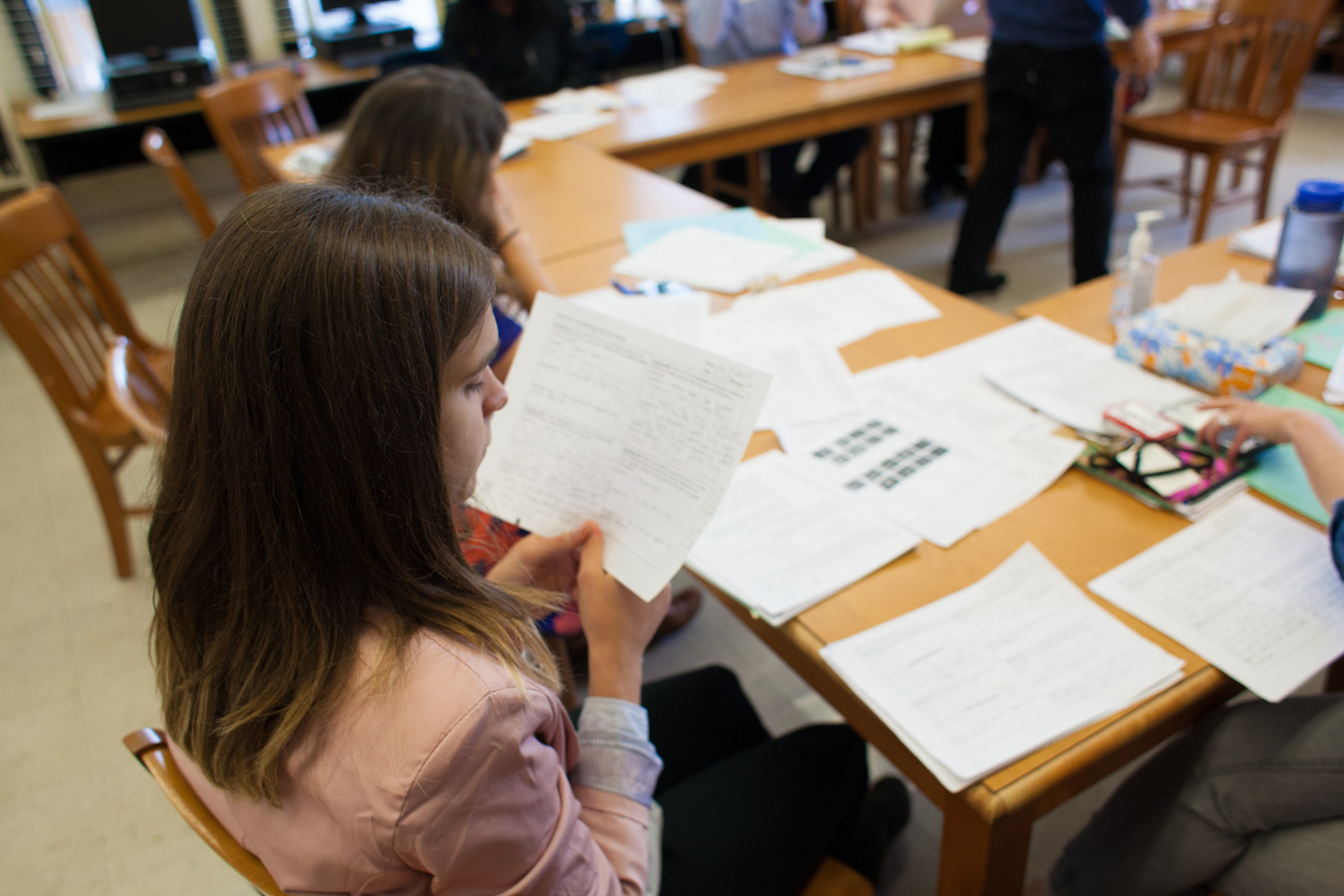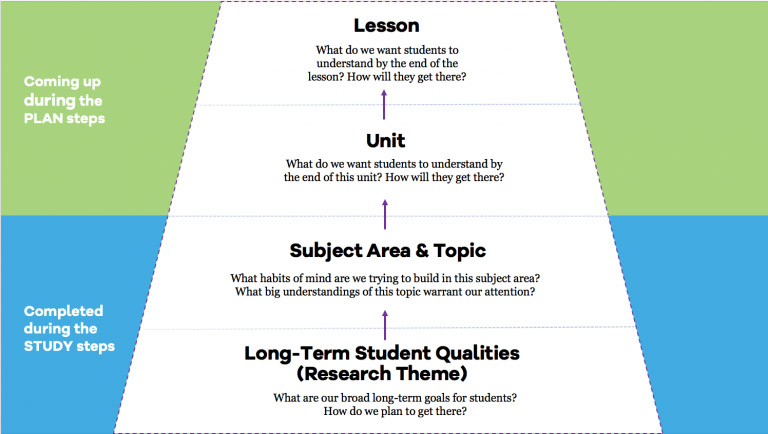A
Choose the Research Lesson
Identify one lesson from within your unit to serve as a research lesson.
Choose one lesson within the unit as a research lesson, to be planned in detail by your team and observed by them (and by other educators, if you so choose). Your research lesson choice may be determined by practical concerns such as timing–the date your team members can be freed up to observe. Your team’s desire to study a particular element of the unit may also shape your choice of lesson–for example, you may be eager to try out a new unit introduction.
The most valuable research lessons provide ample windows into student thinking, through students’ writing, small-group discussion and/or whole-class discussion, and through use of tasks that reveal students’ thinking. Once you have chosen the research lesson:
Add the Title of the Lesson (#1) to your Teaching-Learning Plan.
A
Clarify Lesson Goals
Use this opportunity to revise and fine-tune your goal statement.
Your unit plan specifies a goal(s) for the proposed research lesson. Tweak your lesson goal(s) as needed to make sure they capture your thinking about the following questions:
- What is the new learning this lesson expects from students?
- What do we want students to understand or know by the end of the lesson?
- What is important about this lesson?
Write out your (working) Goals of the Lesson (#8) and add them to the Teaching-Learning Plan. Feel free to revisit and revise the goals as your team’s thinking about the lesson evolves.
A
Consider Your Long-Term Goals
Will your lesson bring you and your students closer to the long-term goals you identified in your Research Theme?
Just before you dive into lesson design is a good time to remember the long-term goals represented in your research theme, and your theory of action about how to get there. Some teams create a visual reminder, like the one below, that the research lesson supports nested layers of goals.
Math: Example of Four Layers of Lesson Study Goals
If your team would find it useful to have a graphic that shows your own layers of goals, you can create one using the downloadable template in the Resources section.
Resources:
A
Do the Task and Anticipate Student Responses
Consider the central task of the lesson. Does it seem well-designed to support the goals of the lesson, unit, and research theme? Will all your students be able to find an entry point, and progress toward the lesson goals? Or do you need to modify the task in some way? Once your team has tentatively arrived at a lesson task, have each member of the team:
- Independently do the task, as if they were a student
- Imagine several students in their class, and anticipate how each one of them would respond to the task
Then share and discuss your responses to the task, using your own and colleagues’ experiences to expand your thinking about how students might respond.
The Value of Anticipating Student Thinking
Anticipating student thinking is a core teaching skill that allows teachers to notice student thinking and build bridges from it to new understandings. Anticipating student thinking and comparing your expectations with the actual student thinking during the lesson will help your team develop this core skill, which is so helpful in the “swiftly flowing river” of daily classroom life.
However, as teacher Heather Crawford notes, anticipating student thinking may initially be hard.
It is challenging – to try and think about the students’ solutions to the problem before they do it, and to try and get all of the answers they might come up with.… Before we did Lesson Study, we really didn’t think about what the student responses would be to the questions…. It was, ‘Well, we hope they get the right answer and if they don’t then we will deal with it.’ Now we are really thinking about, ‘Well, what if this answer were to come up? How would we deal with it?’ We think a lot more about the motivation for the lesson and making sure that the kids have the prior knowledge that they need before we teach each lesson.
Capture your ideas about anticipated student responses in your team notes. These will be used to design the flow of instruction, so that it builds from anticipated student responses.



